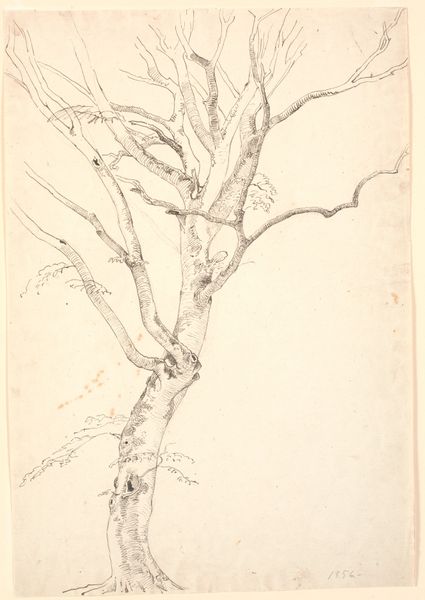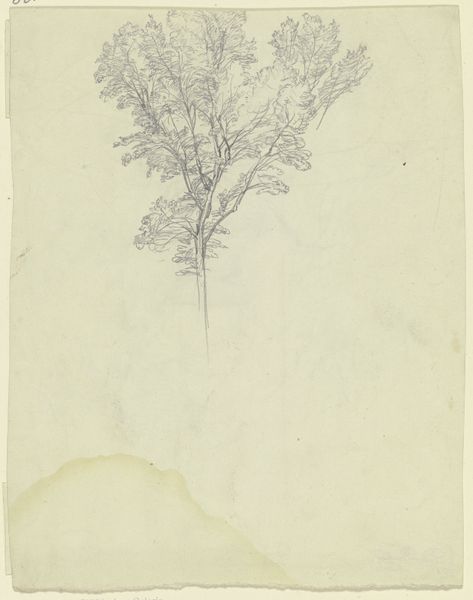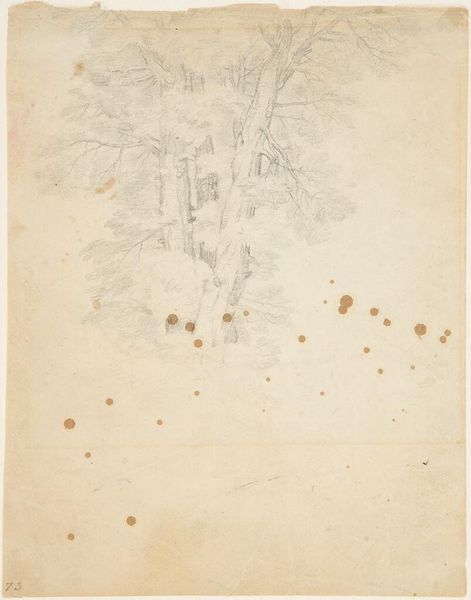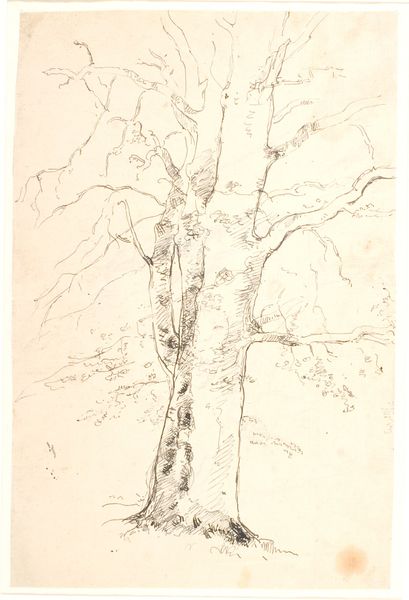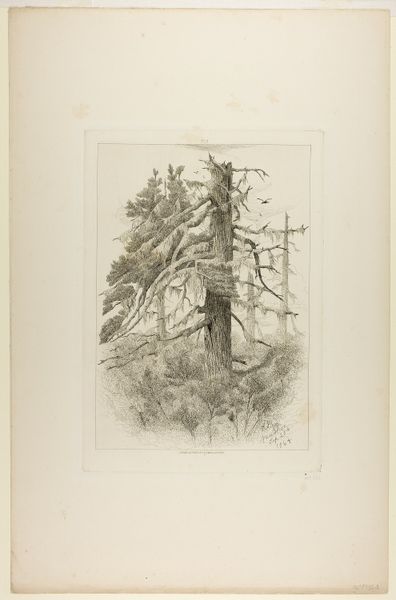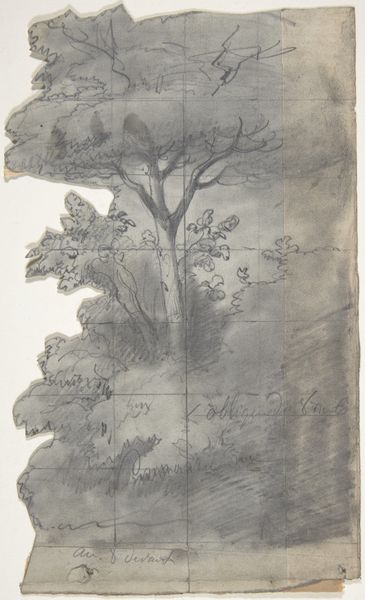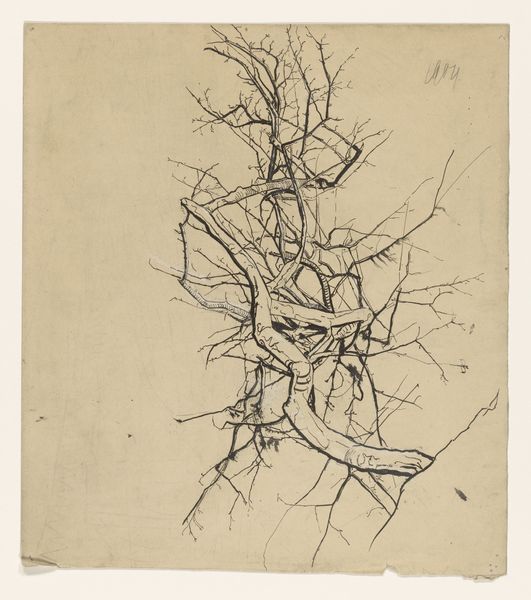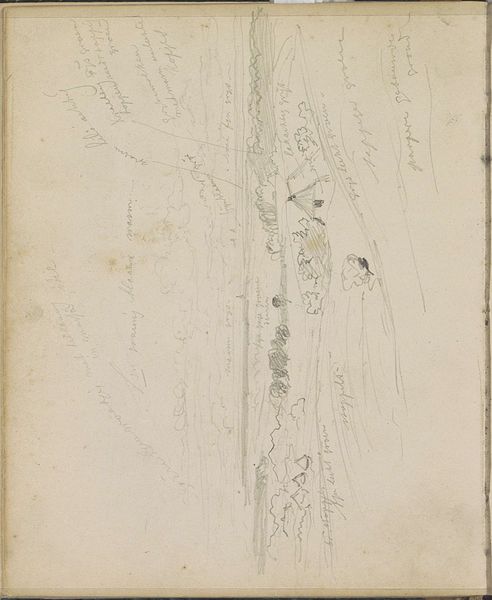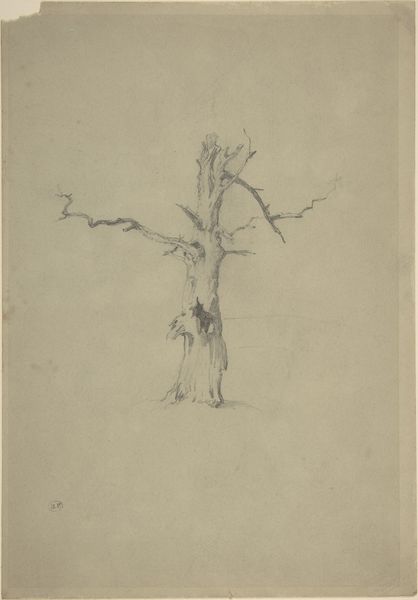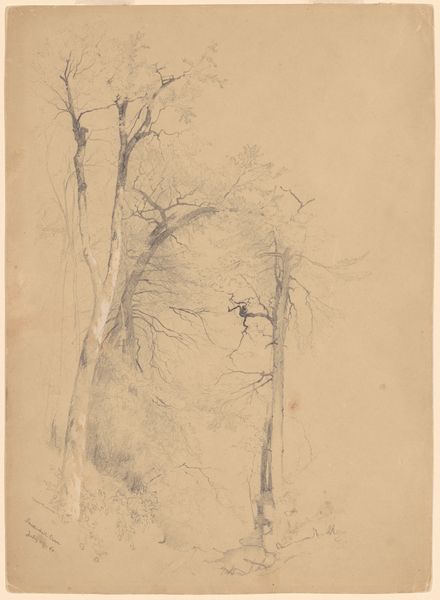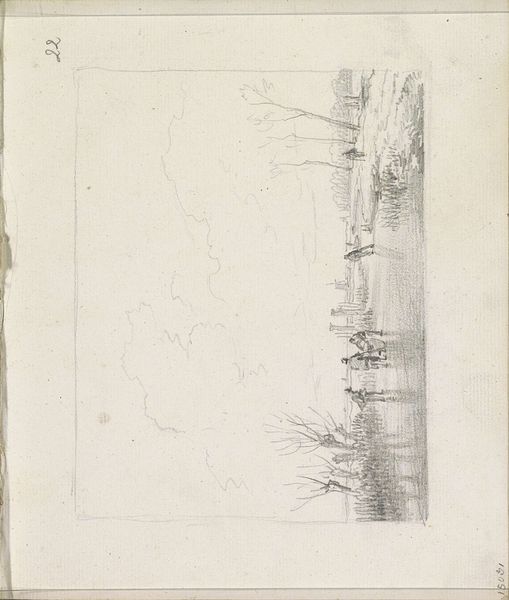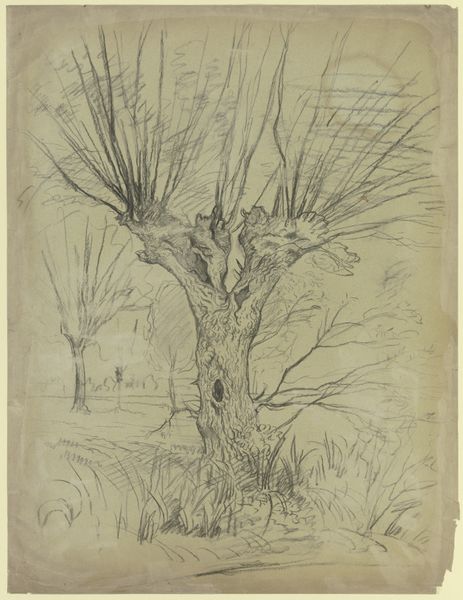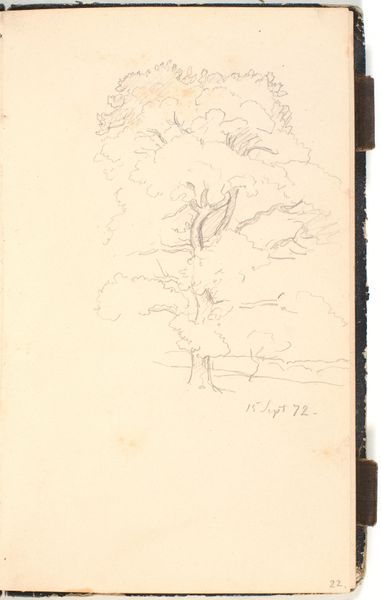
Copyright: Public Domain
Editor: Here we have "Forest Section," a drawing by Hans Thoma from 1859. It's incredible how much detail he gets with what looks like simple pencil lines. It makes me feel like I'm actually standing in the woods. What draws your attention in this piece? Curator: It's fascinating to consider this drawing through a materialist lens. Look closely at the paper itself – you can see imperfections, spots where the process of creation isn’t perfectly controlled. How does this ‘raw’ aspect influence your perception of the romantic idealization of nature often associated with this period? Editor: That's interesting; I hadn't really noticed those imperfections. It does kind of ground it. The detail almost romanticizes it, but also makes it feel real, even industrial in a way. Curator: Precisely! The very act of drawing, the repetitive labor of applying graphite to paper to represent individual leaves and branches, speaks to the artist's engagement with the physical world. Do you think this labor-intensive method changes the traditional high art, "flashy" landscape? Editor: Definitely. You see the work that goes into it, the materiality behind the landscape. Instead of a sublime moment, it is the material effort of recording a sublime scene. I appreciate it way more! Curator: Exactly. It prompts us to reconsider the role of artistic labor in constructing our understanding of nature and, by extension, our environment. Perhaps by observing labor behind art we appreciate labor anywhere. What do you make of the water stains or markings in the piece? Editor: I almost didn't see those until you mentioned them! I assumed it was damage. Maybe that adds another layer - showing the passing of time as another sort of production or degradation. Thanks! Curator: That's a really interesting interpretation, thank you. I will make sure to think about the influence of 'damage' to artistic analysis in the future!
Comments
No comments
Be the first to comment and join the conversation on the ultimate creative platform.
